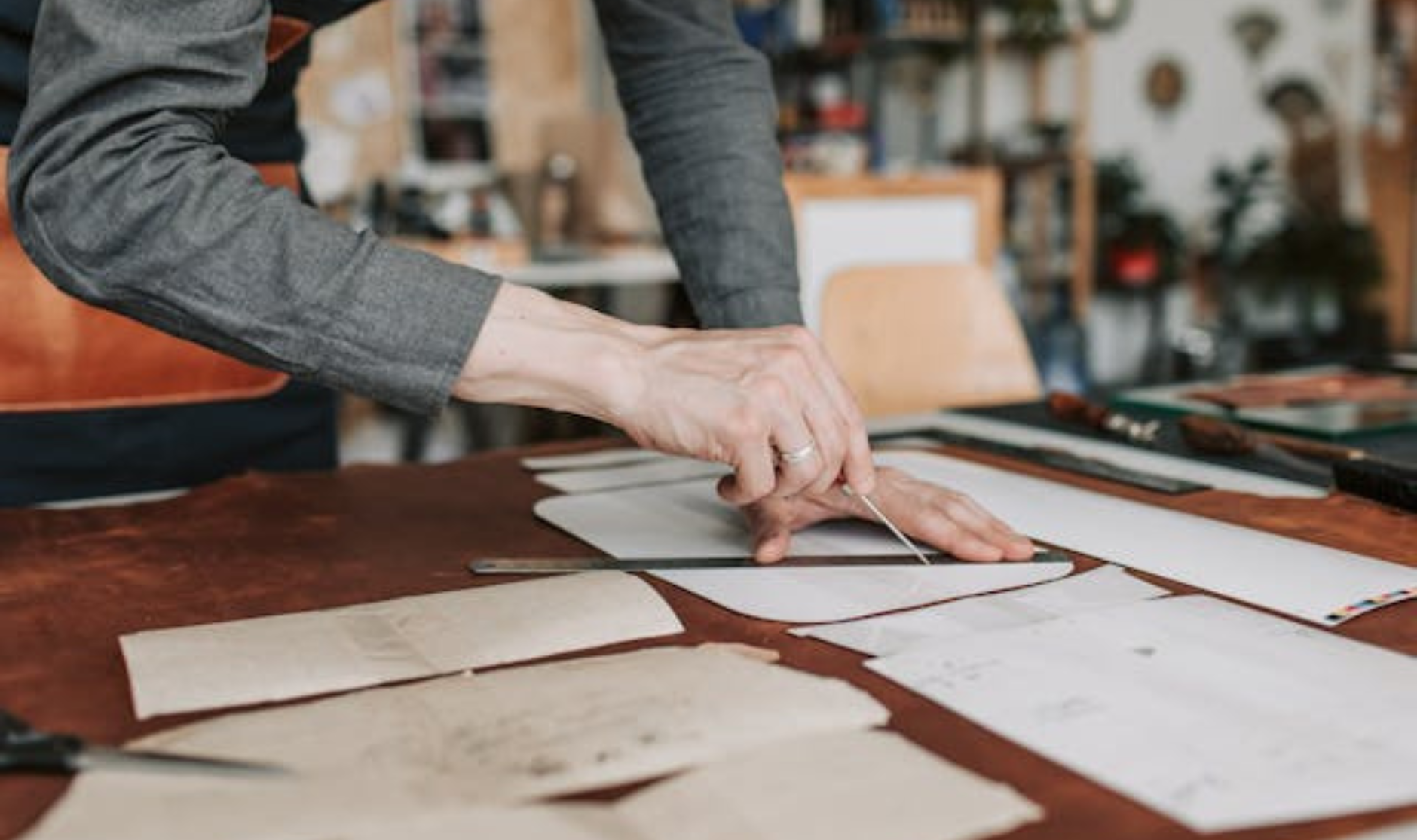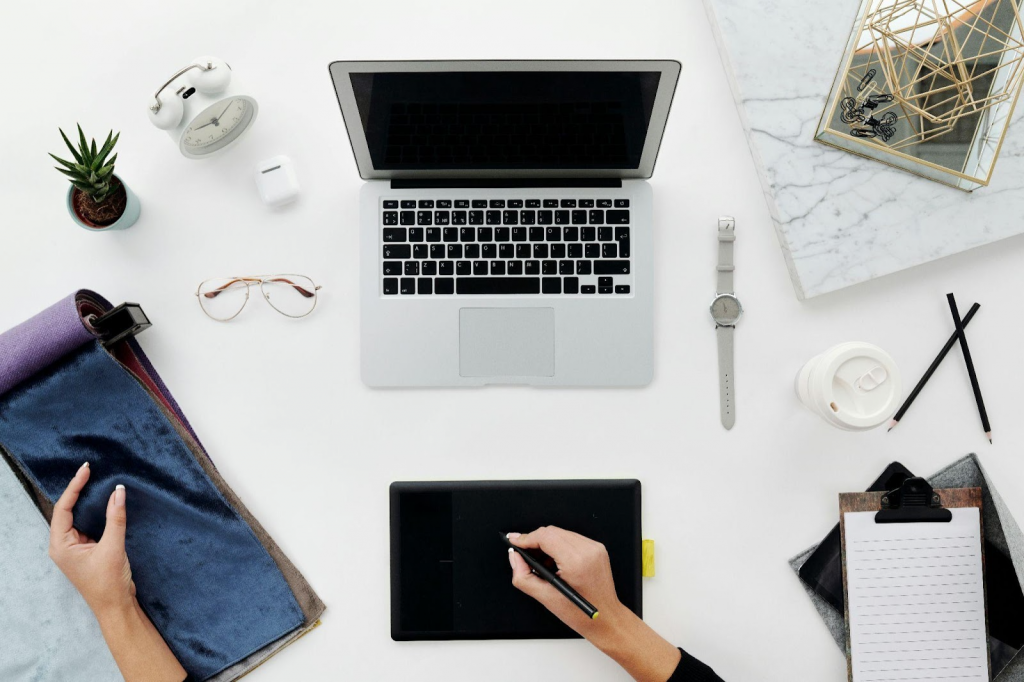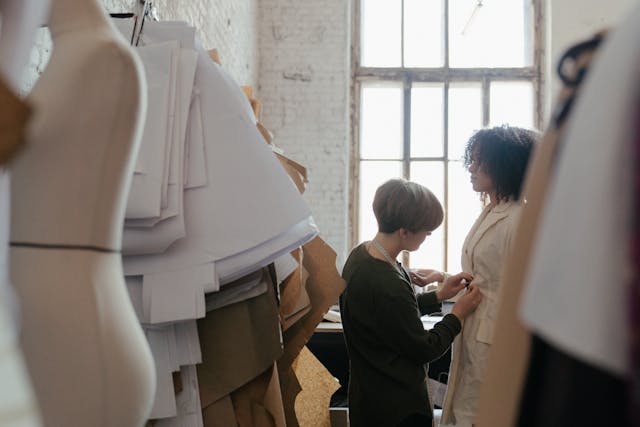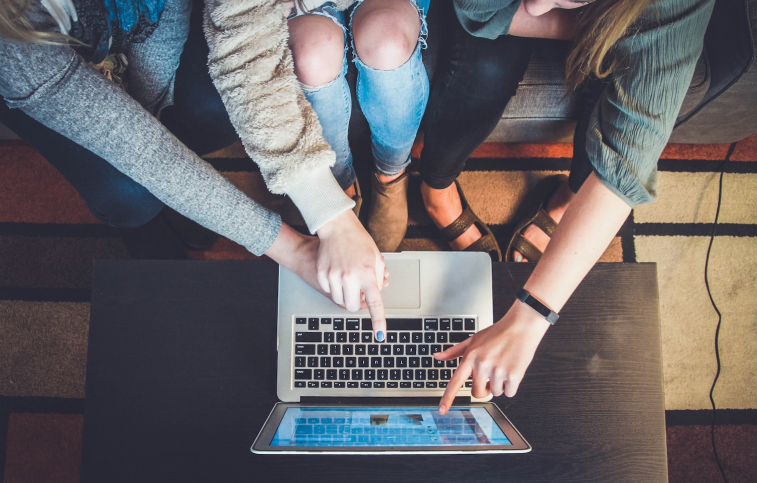How To Hire A Pattern Maker For Your Independent Label
04 October 2025
5 Mins Read

- How To Hire A Pattern Maker?
- Begin With Location
- Understand Their Role
- Look For Experience And Specialization
- Evaluate Communication Skills
- Discuss Technology And Tools
- Check Availability And Workflow
- Talk About Costs Upfront
- How Do The Pattern Makers Work?
- Drafting
- Refining and marking
- Developing prototypes
- Grading and production
- Wrapping Up
Every independent fashion label is initially a vision. That vision may have been conveyed through bold sketches, some fabric swatches, or a strong idea of how your clothes should appear.
The biggest challenge would be to transform those concepts into clothes that fit, are well-wrapped, and move as you had imagined.
This is the place of a pattern maker. Usually, their work is less visible than that of other crew members, but it is still one of the most essential steps in the garment creation process.
But, How to hire a pattern maker? Well, Selecting the right professional can take your brand from good to great.
In this blog, we will take a look at the ways that you can use to hire the right pattern maker. Read on…

How To Hire A Pattern Maker?
To hire a pattern maker, you should determine whether to hire an in-house or freelance professional, search for candidates on specialized websites and networks, and evaluate their portfolios and experience.
Clear communication and a well-defined project brief are critical for a successful collaboration.
Begin With Location
Los Angeles is a metropolis where the fashion scene is vibrant and thriving. It is a fact that many independent designers prefer local assistance.
They argue that it not only makes the process more hands-on but also keeps it close. As you will be embarking on your mission, you will often see that the term’ pattern maker Los Angeles’ is being frequently referred to.
In fact, many qualified individuals are living in the city who are familiar with the fabric and silhouettes and are trained to work with fast-moving labels.
By working with a local person, you also have the opportunity to meet with them in person. You can physically check the prototypes and solve the problems right away without waiting for a long time if there is a delay.
Understand Their Role
A pattern maker is not just someone who traces shapes on paper. They translate your sketches into technical blueprints that guide the entire production team.
They must think about fit, seam placement, and construction methods. Moreover, they balance creativity with precision.
If your designs lean toward streetwear, you must know how to make roomy fits that still look sharp.
If you work in eveningwear, you need to understand delicate fabrics. The pattern serves as the bridge between art and production, so hiring someone with the right background is crucial.
Look For Experience And Specialization
Every pattern maker brings a unique set of skills. Some have years in luxury fashion. Others focus on denim or activewear. Many worked in large production houses before shifting to freelancing.
Ask about their past projects and request samples of their work. If possible, try on garments they have helped create.
This gives you a clear idea of their ability to shape designs into wearable products. Matching their expertise with your label’s style avoids missteps and wasted money.
Evaluate Communication Skills
Even the best technical expert cannot help much if they cannot communicate. Your relationship with a pattern maker is ongoing and often intense. You will trade feedback, adjust designs, and fine-tune details.
Pay attention to how they respond to questions. Do they explain technical terms in plain language? Do they listen to your vision instead of pushing their own?
Misunderstandings can stall production. Effective communication keeps the project moving forward and preserves your creative energy.
Discuss Technology And Tools
The fashion world has shifted toward digital tools. Many pattern makers now utilize software such as Gerber or Optitex to create digital patterns. This speeds up revisions and allows easy sharing with factories worldwide.
At the same time, some designers prefer the touch of manual drafting. The choice depends on your brand’s workflow and budget.
Ask if they provide digital files, hard copies, or both. Make sure their tools align with how you plan to scale your label.
Check Availability And Workflow
Independent labels often work on tight timelines. You need to know if the pattern maker can keep up with the pace.
You can always ask about their average turnaround time. This can also help you learn how many clients they have handled at once.
You can always find yourself a busy expert who can promise to deliver top-notch work! But they can also leave you waiting for weeks.
On the other hand, you can look for someone who can promise you available time in their schedule. This way, they can dedicate more attention to your project.
Discuss deadlines early and confirm that they can stick to them. This clarity avoids disappointment down the line.

Talk About Costs Upfront
Money can be a sensitive topic, but it is better to be clear from the start. Some pattern makers charge per piece.
Others set hourly rates. Complex designs may cost more because they require additional fittings and revisions.
Obtain a detailed estimate before committing. Ask what is included in the price, such as revisions or digital files.
Transparent pricing helps you budget and avoids surprise bills. A fair rate does not always mean the cheapest. It means good value for quality work.
How Do The Pattern Makers Work?
Pattern makers are the whizzes who turn the sketches or ideas of a fashion designer into a usable template for making a garment.
So they work as the center point that connects the design and production stages. Basically, their work involves:
Drafting
First of all, they create a master pattern, which is a “sloper” or “block” by default, from the given body measurements either by hand or with the help of computer-aided design (CAD) software.
Refining and marking
The pattern maker, after that, changes the master pattern to bring in the garment’s exclusive design features.
They insert the helpful markings like grainlines, seam allowances, and notches that are the preliminary steps of the sewing and cutting process.
Developing prototypes
They make the first prototype, which is often in cheap muslin fabric, to check the fitting and flow. Based on this fitting, they make the necessary corrections to the final pattern.
Grading and production
The pattern maker does the task of creating different sizes for a single design, which is known as grading for mass production. The finalized patterns are then used for production.
Wrapping Up
Employing a pattern maker is one of the most clever decisions that an independent label can make.
The appropriate person changes your concepts into patterns that factories can accurately follow.
In essence, one should look for experience, communication, and mutual agreement on the objectives of your brand. Consider tools, workflow, and pricing to prevent issues along the way.
Los Angeles houses a vibrant talent pool; thus, finding a match closer to your location is not a big deal.
Having a tight link with a proficient technician is the same as giving your label a solid structure and gaining the trust of the customers.
Thanks to the on-point pattern maker, the manufacture of your concept has the potential to get the store shelves and win over loyal consumers.

















